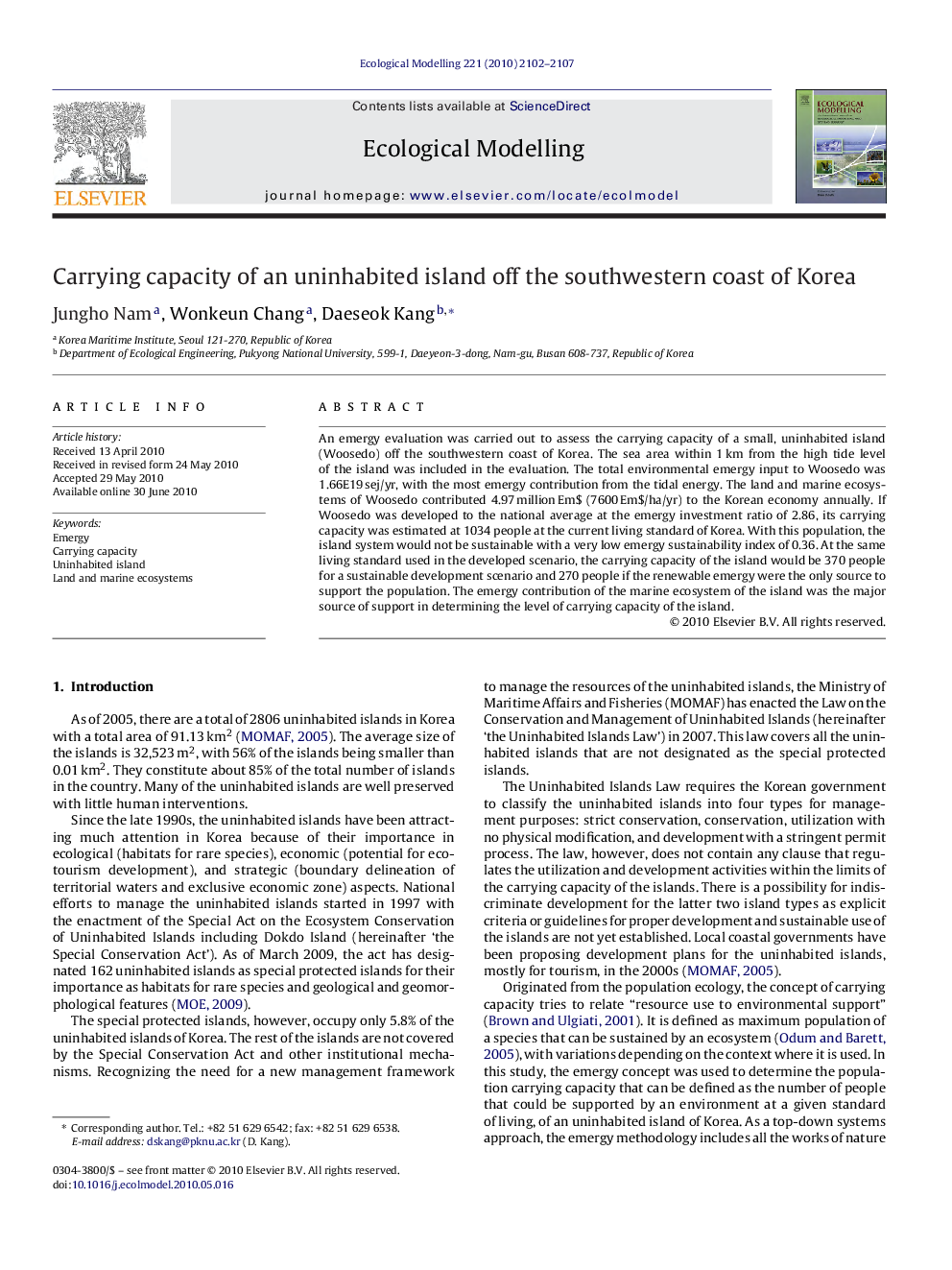| Article ID | Journal | Published Year | Pages | File Type |
|---|---|---|---|---|
| 4377314 | Ecological Modelling | 2010 | 6 Pages |
An emergy evaluation was carried out to assess the carrying capacity of a small, uninhabited island (Woosedo) off the southwestern coast of Korea. The sea area within 1 km from the high tide level of the island was included in the evaluation. The total environmental emergy input to Woosedo was 1.66E19 sej/yr, with the most emergy contribution from the tidal energy. The land and marine ecosystems of Woosedo contributed 4.97 million Em$ (7600 Em$/ha/yr) to the Korean economy annually. If Woosedo was developed to the national average at the emergy investment ratio of 2.86, its carrying capacity was estimated at 1034 people at the current living standard of Korea. With this population, the island system would not be sustainable with a very low emergy sustainability index of 0.36. At the same living standard used in the developed scenario, the carrying capacity of the island would be 370 people for a sustainable development scenario and 270 people if the renewable emergy were the only source to support the population. The emergy contribution of the marine ecosystem of the island was the major source of support in determining the level of carrying capacity of the island.
